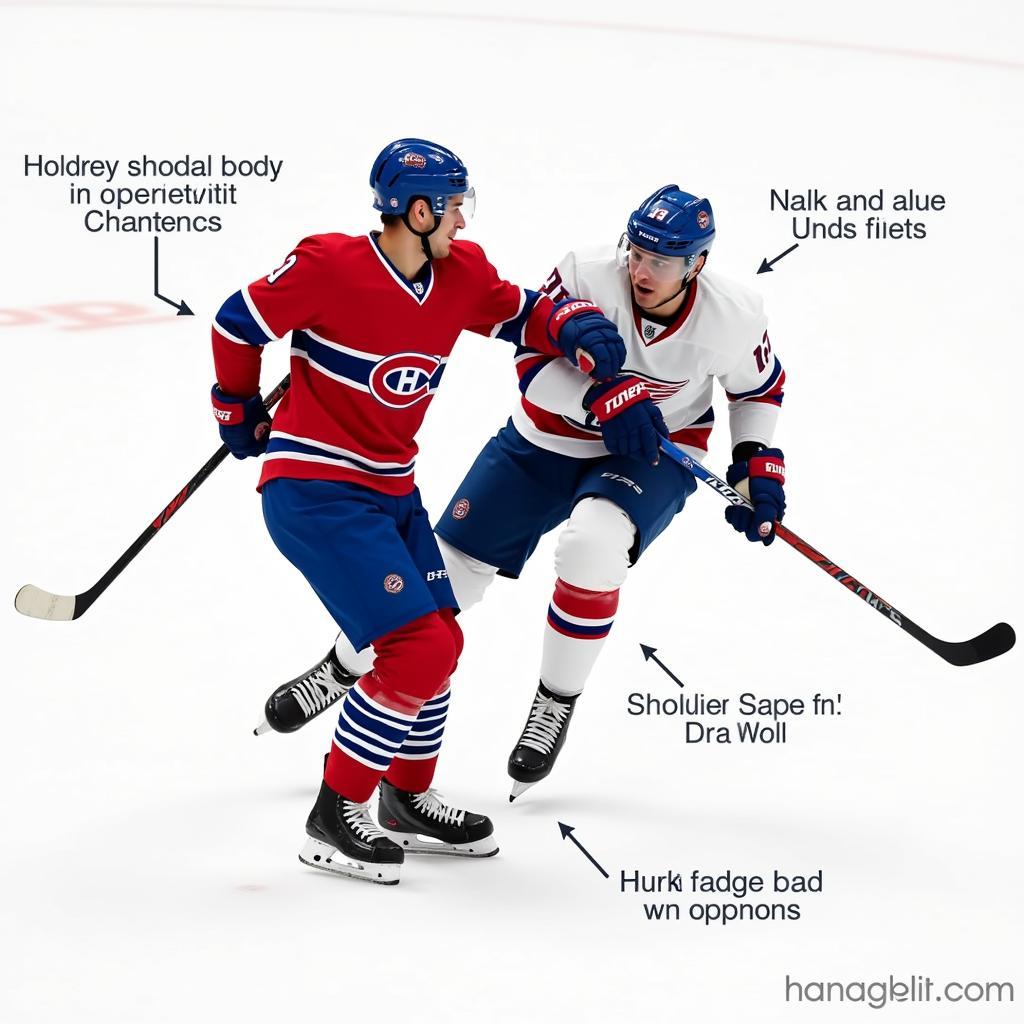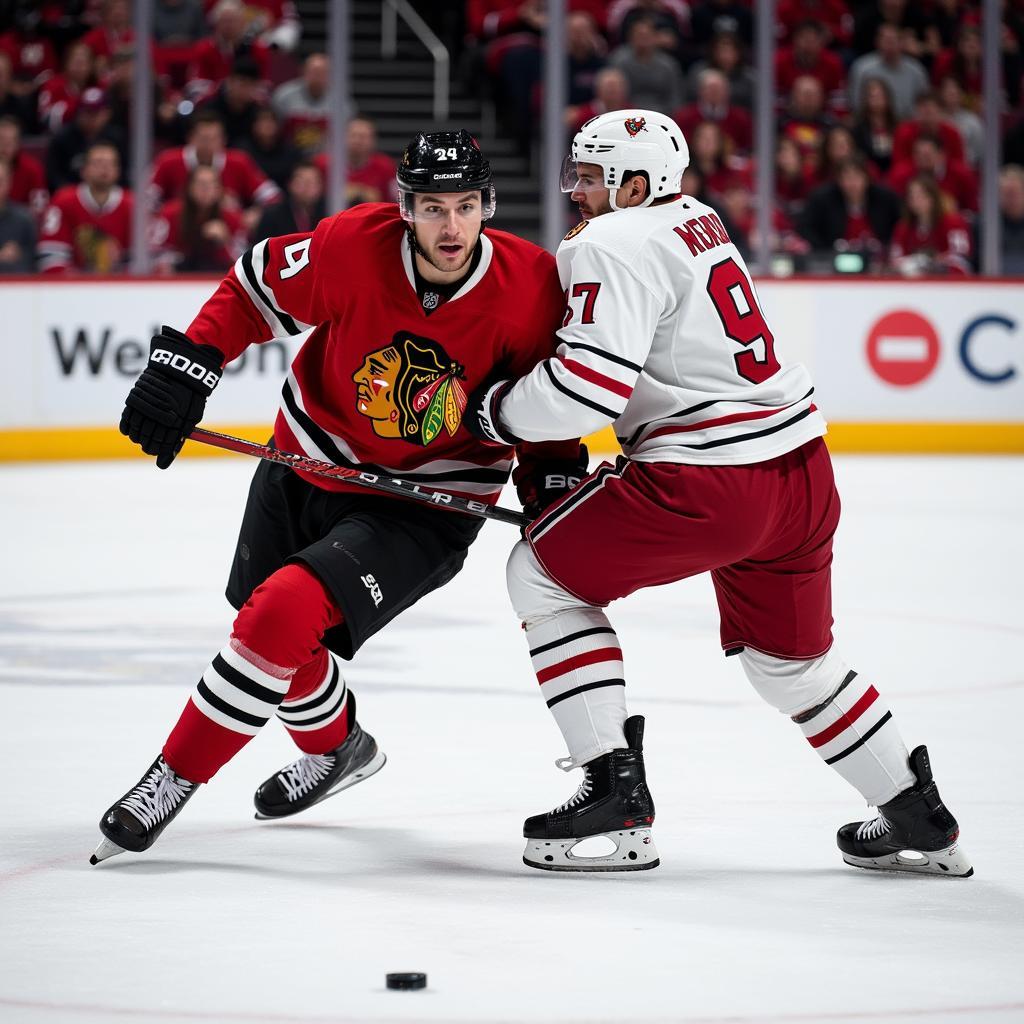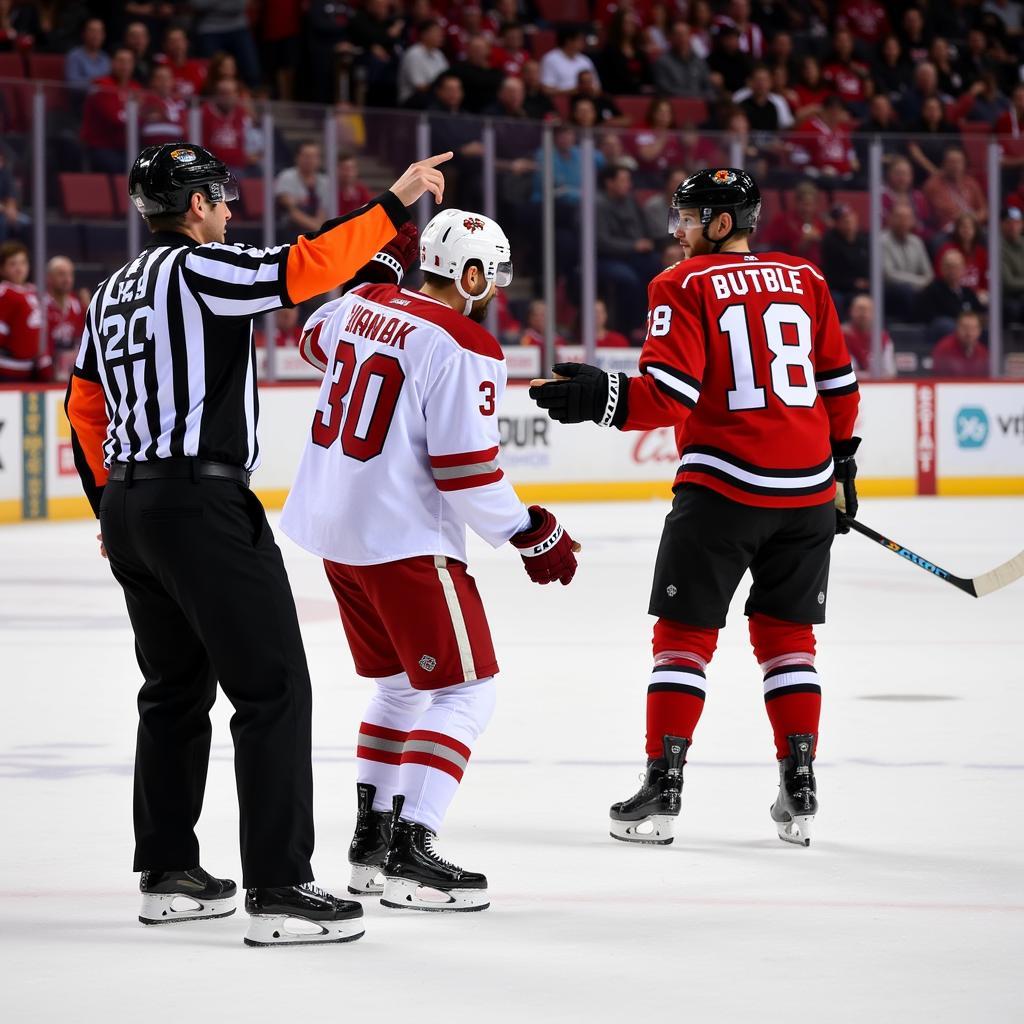A shoulder check in hockey is a legal defensive maneuver where a player uses their shoulder to separate an opponent from the puck. It’s a crucial aspect of the game, showcasing both physicality and strategy. While legal within the rules, shoulder checks require precise execution and adherence to specific guidelines to ensure safety and fair play.
The Anatomy of a Legal Shoulder Check
 Hockey Player Executing a Legal Shoulder Check
Hockey Player Executing a Legal Shoulder Check
A legal shoulder check hinges on several key factors:
- Target Area: The check must primarily target the opponent’s chest and shoulder area. Contact with the head is strictly prohibited and considered an illegal hit, often leading to penalties.
- Timing: The check should be executed when the opponent is in possession of the puck or within playing distance of it. Deliberately targeting a player away from the puck can result in a boarding penalty.
- Force: While a degree of force is inherent in shoulder checks, it should be proportionate to the play. Using excessive force, even when targeting the legal area, can lead to penalties for charging or roughing.
The Importance of Shoulder Checks in Hockey
 Hockey Player Using a Shoulder Check for Puck Recovery
Hockey Player Using a Shoulder Check for Puck Recovery
Shoulder checks play a vital role in hockey for several reasons:
- Puck Possession: A well-executed shoulder check can separate an opponent from the puck, creating a turnover opportunity for the defending team.
- Defensive Zone Coverage: Defensemen often use shoulder checks to clear the front of the net, preventing opponents from scoring opportunities in high-danger areas.
- Physicality and Momentum Shifts: Shoulder checks, when performed legally and effectively, can energize a team and swing momentum in their favor.
Common Misconceptions and Penalties
 Referee Calling a Penalty for an Illegal Shoulder Check
Referee Calling a Penalty for an Illegal Shoulder Check
Despite being a legal play, shoulder checks are often misunderstood and misapplied. Some common misconceptions include:
- Head Contact is Always Illegal: While head contact is often penalized, there are instances where incidental contact may occur despite a legal check. The referee determines the intent and force behind the contact when making a penalty call.
- Shoulder Checks are Always Allowed: As mentioned before, timing and force are crucial. Targeting a player away from the puck or using excessive force can result in penalties.
Conclusion
Shoulder checks remain an integral part of hockey, requiring skill, timing, and respect for player safety. When executed properly, they are a valuable defensive tool and contribute to the intensity and excitement of the game. Understanding the rules and nuances of shoulder checking is crucial for both players and fans to appreciate this dynamic aspect of hockey.





